From Copenhagen to Carrara to Rome: The Modern-Day Travels of Ancient-Apostle Statues
Contributed By Scott Taylor, Church News managing editor

Johannes Felder sculpts a marble statue at the Studi d’Arte Cave Michelangelo in Carrara, Italy, on Thursday, November 15, 2018. Photo by Kristin Murphy, Deseret News.
ROME, ITALY
The ancient Apostles have traveled again, from Copenhagen, Denmark, to Carrara, Italy, and on to Rome. It’s the second time in as many centuries those cities have been linked with the likes of Peter, James, John, and Paul.
In the early 1800s, a Danish sculptor trained in Rome crafted sculptures of Jesus Christ and 12 New Testament Apostles—first of clay, then of plaster, and finally of Carrara marble, with all 13 destined for a redesigned Copenhagen cathedral.
More recently, The Church of Jesus Christ of Latter-day Saints digitally mapped the statues in Copenhagen, quarried marble in Carrara to fashion the modern-day replicas, and then placed the reproductions within view of its new Rome Italy Temple, the Church’s first in a biblical land.
But there’s more of a link here than just the three European cities.
The statues underscore the connection between the Holy Land, Rome, and Salt Lake City—the geography of the Bible with the city central to Christianity over the ages and now with the Latter-day Saints’ headquarters city in Utah.
The process of re-creating the statues links the centuries-old tradition of sculpting with today’s technology.
Also the Church is linking its longtime use of the Christus statue with this first-time display of Apostle statues in Rome and a key symbol found on one—the keys Peter holds in his right hand.

Bertel Thorvaldsen’s statue of Peter, one of the Twelve Apostles, holds keys at the Church of Our Lady in Copenhagen, Denmark, on Tuesday, November 13, 2018. The Twelve Apostles statues were carved out of Carrara marble between 1829 and 1848. Replicas of the statues are now on display in the Rome Temple Visitors’ Center in Italy. Photo by Kristin Murphy, Deseret News.

Bertel Thorvaldsen’s original Christus statue is in the Church of Our Lady in Copenhagen, Denmark, on Tuesday, November 13, 2018. Photo by Kristin Murphy, Deseret News.

Locator map of Copenhagen, Denmark; Carrara, Italy; and Rome, Italy
The keys denote the Savior’s message to His lead Apostle in Matthew 16:19: “And I will give unto thee the keys of the kingdom of heaven,” or priesthood authority.
And now, as the Church is poised to welcome the world to the first temple to be constructed here where ancient Apostles walked, the remarkable story of the statues and what they represent is ready to be told.
The sculptor
Danish sculptor Bertel Thorvaldsen (1770–1844) was born to a peasant mother and a wood-carving father; as an older child, he joined his father in the shipyards carving ship decorations. At age 11, Thorvaldsen was accepted into the Royal Danish Academy of Art, later earning a stipend to study in Rome, where he became a preeminent sculptor during his four decades there.
Regarded for employing the classic Greek style of flowing lines, slender faces, and close-in body postures rather than the day’s more expressive and flamboyant styles, Thorvaldsen earned commissions from nobility and royalty across the continent.
In 1819, Thorvaldsen returned to Denmark, commissioned to create a collection of statues of Christ and 12 Apostles for a renovation of Copenhagen’s Church of Our Lady (Vor Frue Kirke).
Tracing its roots back to the 12th century, the building had suffered damage and destruction from fires, lightning, and human causes, the most recent the 1807 British bombardment during the Napoleonic Wars.
Thorvaldsen teamed with architect Christian Fredrik Hansen to create a new cathedral in a neoclassical style, showcasing Thorvaldsen’s statues. The Apostles—six to a side—lined the cathedral’s interior walls, with the Christus featured at the front.
The design resulted in a symbolic walk and flow, with no circumlocutious meandering like in other older cathedrals, said Susanne Torgard, curator and art historian at the Church of Our Lady for 15 years.
“You walk up the aisle and you see the resurrected Christ, and then you walk out again, knowing He is behind you,” she said, adding that the architectural symmetry “makes it so that the only way you can walk is towards Christ.”

Bertel Thorvaldsen’s Christus and Twelve Apostles statues are in the Church of Our Lady in Copenhagen, Denmark, on Tuesday, November 13, 2018. Photo by Kristin Murphy, Deseret News.
Thorvaldsen spent a couple of years on sketches and clay models for the Christus, with several accounts given on how the statue’s iconic outstretched arms came to be. One version is that a clay model’s arms softened overnight and drooped; another is that when Thorvaldsen was struggling to find a specific pose, he was inspired when greeted by a sympathetic visitor.
A final clay model was finished in 1821, with castings made as the Christus went first from clay to plaster for its initial offering for the Church’s 1829 inauguration.
“You don’t see the pain, you don’t see the crucifixion, you don’t see the blood or the crown of thorns,” Torgard said of Thorvaldsen’s Christus. “Of course, you see the wounds in His hands and feet. You see Him standing here, that death is overcome and that He is welcoming.”
Along with the Christus statue, Thorvaldsen crafted 12 statues of the ancient Apostles, replacing the traitor Judas Iscariot with Paul, a subsequent Apostle noted for his travels and epistles to church members throughout the Mediterranean, including Rome.
Similar to others of the era, the statues featured elements symbolizing the Apostles’ roles, teachings, or—in several cases—legends of their deaths as martyrs. Peter holds keys, while John and Matthew grasp writing instruments as evangelists who each wrote one of the four Gospels. Others are holding a club, a knife, or a saw.
Like the Christus, the Apostle statues were first done in plaster for their 1829 placement.

Bertel Thorvaldsen’s statue of Peter, one of the Twelve Apostles, at the Church of Our Lady in Copenhagen, Denmark, on Tuesday, November 13, 2018. The Twelve Apostles statues were carved out of Carrara marble between 1829 and 1848. Replicas of the statues are now on display in the Rome Temple Visitors’ Center in Italy. Photo by Kristin Murphy, Deseret News.
The versions in marble
Subsequent financial collections provided funding to have the statues redone—in Carrara where the marble was quarried and then reworked, not by Thorvaldsen but by his workshops and artisans at the base of the quarries.
Given a hero’s welcome back home, Thorvaldsen returned to Denmark for good in 1838, the same year the Church of Our Lady featured the 13 marble statues. Large and small copies of the Christus and Apostles statues were fashioned for public settings and for home, with the Danes displaying the replicas not only for their religious significance but as symbols of both art awareness and national pride.
“The Christus and Apostles were some of the first statues to be copied in mass production,” said Torgard of the clay, porcelain, and metal reproductions that sprang up. “People were going around Copenhagen with a tray on their head selling small porcelain statues. … It became a sign of being ‘educated’ if you had a figure of Thorvaldsen in your home, a sign of knowledge and appreciation of the symbolism.”
Initially, the Christus didn’t get much attention outside of Denmark, until an American textbook at the end of the 19th century described it as “considered the most perfect statue of Christ in the world.” Today, copies of Thorvaldsen’s Christus can be found worldwide, used by various religions and in many different public settings, as well as available for purchase over the internet.
Numerous Latter-day Saint leaders and members have visited the Church of Our Lady over the many decades, including two noteworthy events.

The Church of Our Lady in Copenhagen, Denmark, on Tuesday, November 13, 2018. Photo by Kristin Murphy, Deseret News.
During his apostolic assignments across Europe in 1950, Elder Stephen L. Richards visited Copenhagen and the cathedral and saw the statues. Impressed with the Christus, he arranged to have a reproduction of the statue made and delivered to Salt Lake City. That statue has been a focal point on Temple Square in Salt Lake City for more than a half-century, as featured in the North Visitors’ Center.
Subsequent statues have been displayed by the Church at its booth at the 1964 World’s Fair, several prominent Church history centers, and various temple visitors’ centers, from Los Angeles to Washington, D.C., and from France to New Zealand.
Fiberglass models have been delivered to other temple open houses prior to the respective dedications. The Christus image has also been featured in the past atop the Church’s website home page.
When a 1976 series of area conferences concluded in Copenhagen, President Spencer W. Kimball took a group of senior Church leaders—including President N. Eldon Tanner of the First Presidency; Elders Thomas S. Monson, Boyd K. Packer, and L. Tom Perry of the Quorum of the Twelve Apostles; and Elders Rex D. Pinegar and Robert D. Hales of the Council of the Seventy—with him to the Church of Our Lady, where President Kimball had previously visited.
The moment has been recounted numerous times in talks and messages in each of the four decades since. Often mentioned is President Kimball’s acknowledgment that Thorvaldsen’s work timeline coincided with Joseph Smith’s efforts leading up to and including the Restoration, including the First Vision, the coming of the Book of Mormon, the organization of Church, and the restoration of the Melchizedek Priesthood from Peter, James, and John.
The accounts all cite President Kimball pointing to the statue of Peter and the keys, explaining the symbolism and saying: “We are the living Apostles. We hold the real keys, as Peter did, and we use them every day. They are in use constantly.”
In 2008, then-President Thomas S. Monson announced plans for a temple in Rome, with the groundbreaking occurring two years later.
Within a year, the Church had initiated the process to replicate Thorvaldsen’s statues, receiving enthusiastic approval from officials of Copenhagen’s Church of Our Lady and the nearby Thorvaldsen Museum.
Granted after-hours access to the statues in Copenhagen, a Church team completed a precise digital mapping of each of the 13 statues, creating a detailed, three-dimensional computer image for each that would be used next in Carrara.
The quarries of Carrara
Marble from the Apuan Alps above the city of Carrara has been quarried since ancient Roman times, used originally for buildings, columns, benches, and stairways as well as ornamentation purposes such as tombstones, monuments, and sculptures. Carrara marble is featured in Rome’s Pantheon and Michelangelo’s David and La Pieta sculptures.
The three valleys of more than 650 quarries produce an average of 30,000 tons a month, typically trucked out in 10-ton blocks.

Marble quarry in Carrara, Italy, on Thursday, November 15, 2018. Photo by Kristin Murphy, Deseret News.
Today, Carrara white and blue-grey marble includes a myriad of residential and construction uses, from flooring and wall tiling to countertops to vases, bowls, and lamps. Carrara marble is often featured in Latter-day Saint temples too.
For the Rome replicas, tradition meshed with technology at Carrara’s Tor Art, as high-pressure water jets cut large marble blocks into rough, basic shapes, followed by robotic machines directed by 3-D imaging milling the marble even closer to the shape and contours of the original piece.

Heather Evertsen shows what a sculpture looks like after it has been cut by machine but before it has been refined by hand, outside of TORART in Carrara, Italy, on Thursday, November 15, 2018. Photo by Kristin Murphy, Deseret News.
The final touches and details—refined carving, sanding, and polishing by hand—were done by craftsmen and apprentices at Carrara’s Studi d’Arte Cave Michelangelo.
The local companies and artisans appreciated the Church’s attention to detail and the decision to have the reproductions done at Carrara, as were Thorvaldsen’s originals, said Heather Evertsen, a Latter-day Saint living in Florence who operates tours in that city as well as throughout Tuscany and into the Carrara area and its quarries.
“They came back to the same place, the same quarry, even the same area of the mountain to re-create this project,” Evertsen said. “I think that’s pretty magical.”

Johannes Felder sculpts a marble statue at the Studi d'Arte Cave Michelangelo in Carrara, Italy, on Thursday, November 15, 2018. Photo by Kristin Murphy, Deseret News.
The placement of the statues
While the Rome Italy Temple and its surrounding facilities are opening to the public for the first time this month, work on the Thorvaldsen statue replicas began the better part of a decade ago. The processes of digitally mapping the originals and crafting the replicas were featured in a 2012 Church video report. And a similar video report in March 2017 acknowledged their placement in the Rome visitors’ center, while work continued around them.
“We had to install them out of sequence, before a lot of the finishes were in, and then work around them,” said senior project manager Bret Woods, noting the painting and the installation of flooring, a high-wall mural, and rotunda windows that followed. “We had to protect them for the last two years because they are so delicate.”
With the facility’s roof already in place, the heavy statues had to be inserted horizontally by special cranes going through the opening of what would be the rotunda windows—no small task for the heavy statues. The Christus alone weighs some four tons and rises nearly 13 feet from base to top, while the 12 Apostle statues—scaled to three-quarters of the originals in Copenhagen—weigh about 1,000 pounds each.
The visitors’ center is just one of several facilities and services adjacent to the new Rome Italy Temple, along with patron housing, a stake center, and administrative offices all found with the 15-acre complex.

Replicas of Danish sculptor Bertel Thorvaldsen’s Twelve Apostles statues are on display in the Rome Temple Visitors’ Center in Rome, Italy, on Friday, November 16, 2018. Photo by Kristin Murphy, Deseret News.
Like others across the globe, the Rome visitors’ center points people to the temple, says Elder Brent H. Nielson, a General Authority Seventy and Executive Director of the Church’s Missionary Department, which oversees such visitors’ centers.
“There’s an opportunity for people who are unable to go into a temple to come to the visitors’ center, learn about the temple, learn about the gospel of Jesus Christ, and have an opportunity to be taught here while they’re looking at the temple.”
Featured in the rotunda of the visitors’ center, the Christus and Apostles statutes are presented as having a westward view over the complex’s plaza toward the new multistory temple.
“The beautiful view of the Savior looking at the temple is quite amazing to see,” Elder Nielson said.
As is the unique view of the 13 statues, he added. “It not only shows the Savior, but it shows His 12 Apostles—that He actually organized a church, that He called 12 Apostles, and that in the modern-day Church we have 12 Apostles too.”
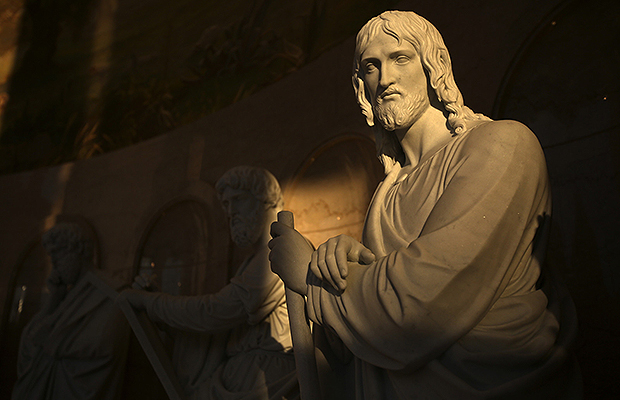
A replica of Bertel Thorvaldsen’s James, the son of Alpheus, or James the less, is on display with statues of the other Twelve Apostles in the visitors’ center for the Rome Temple in Rome, Italy, on Friday, November 16, 2018. Photo by Kristin Murphy, Deseret News.

Susanne Torgard, curator for the museum of the Church of Our Lady, talks about Danish sculptor Bertel Thorvaldsen, who created Christus and the Twelve Apostles statues, at the Church of Our Lady in Copenhagen, Denmark, on Tuesday, November 13, 2018. Photo by Kristin Murphy, Deseret News.
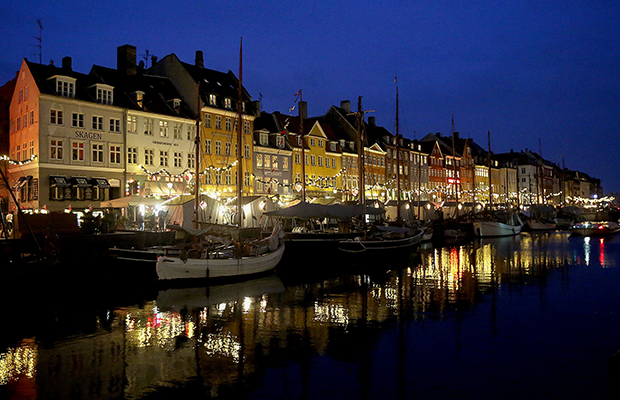
Christmas markets light up Nyhavn in Copenhagen, Denmark, on Tuesday, November 13, 2018. Photo by Kristin Murphy, Deseret News.
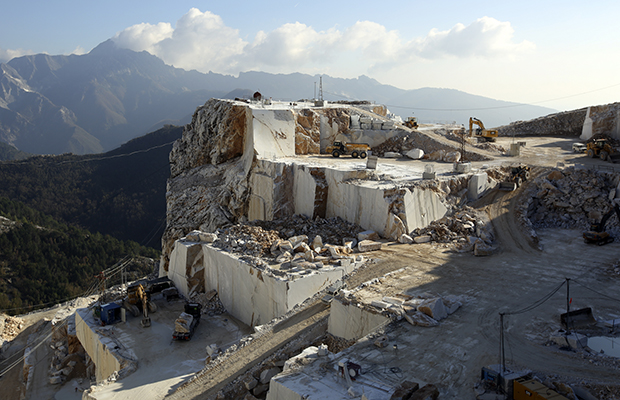
Trucks move marble blocks at a marble quarry in Carrara, Italy, on Thursday, November 15, 2018. Photo by Kristin Murphy, Deseret News.
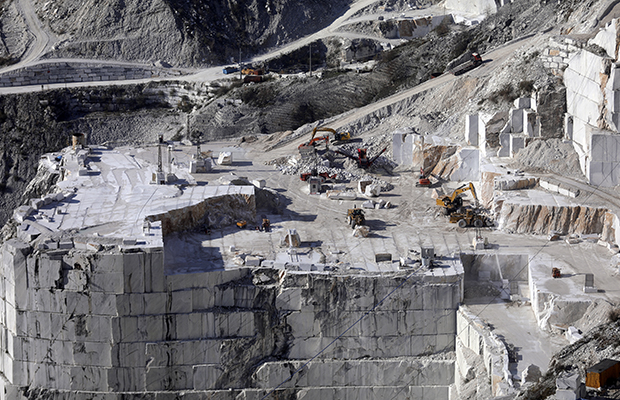
Marble quarry in Carrara, Italy, on Thursday, November 15, 2018. Photo by Kristin Murphy, Deseret News.

A block of marble is marked to be cut at TORART in Carrara, Italy, on Thursday, November 15, 2018. Photo by Kristin Murphy, Deseret News.
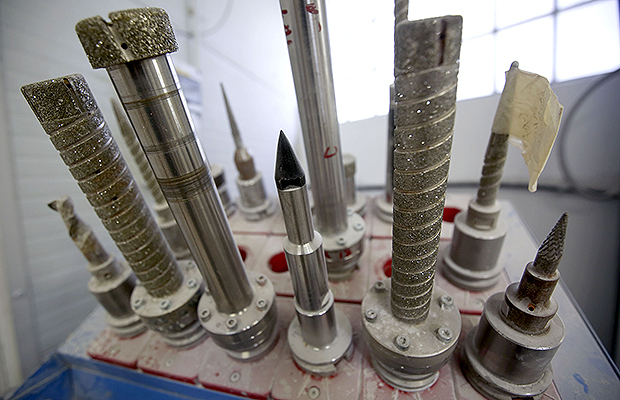
Tools for cutting marble at TORART in Carrara, Italy, on Thursday, November 15, 2018. Photo by Kristin Murphy, Deseret News.

Trucks move marble blocks at a marble quarry in Carrara, Italy, on Thursday, November 15, 2018. Photo by Kristin Murphy, Deseret News.

Blocks of marble in Carrara, Italy, on Thursday, November 15, 2018. Photo by Kristin Murphy, Deseret News.

Trucks travel over a bridge at the base of marble quarries in Carrara, Italy, on Thursday, November 15, 2018. Photo by Kristin Murphy, Deseret News.
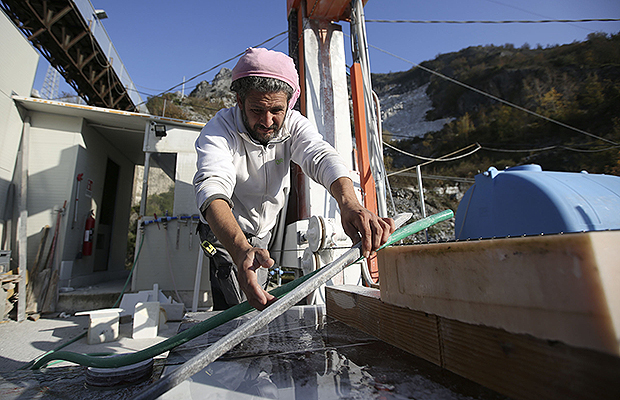
Simone Zanaglia measures where to cut Portuguese pink marble at TORART in Carrara, Italy, on Thursday, November 15, 2018. Photo by Kristin Murphy, Deseret News.

Rome Temple in Rome, Italy, on Friday, November 16, 2018. Photo by Kristin Murphy, Deseret News.

Rome Temple in Rome, Italy, on Friday, November 16, 2018. Photo by Kristin Murphy, Deseret News.
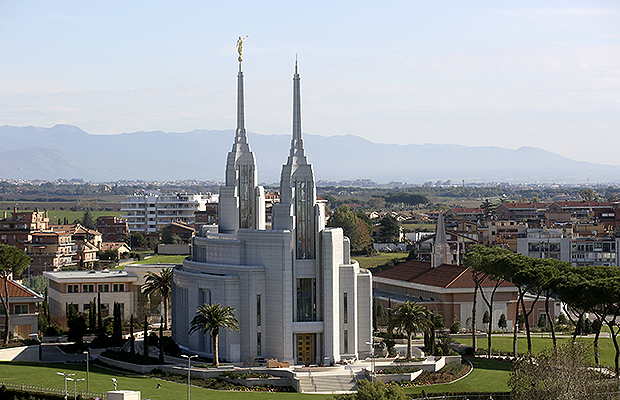
Rome Temple in Rome, Italy, on Sunday, November 18, 2018. Photo by Kristin Murphy, Deseret News.
